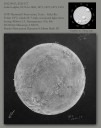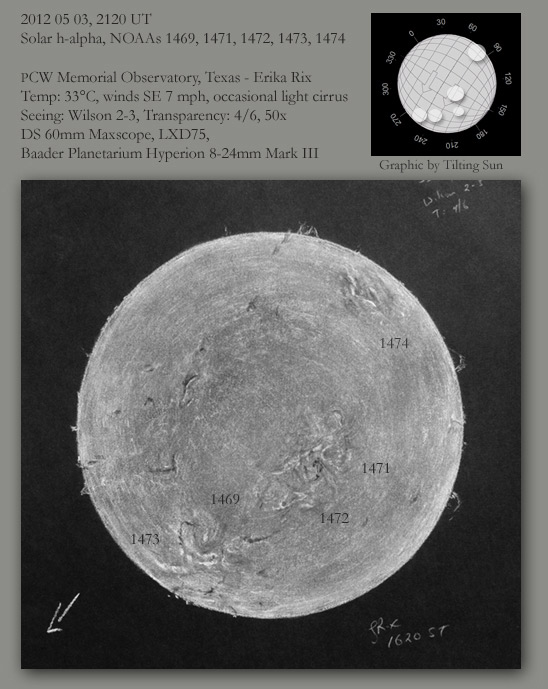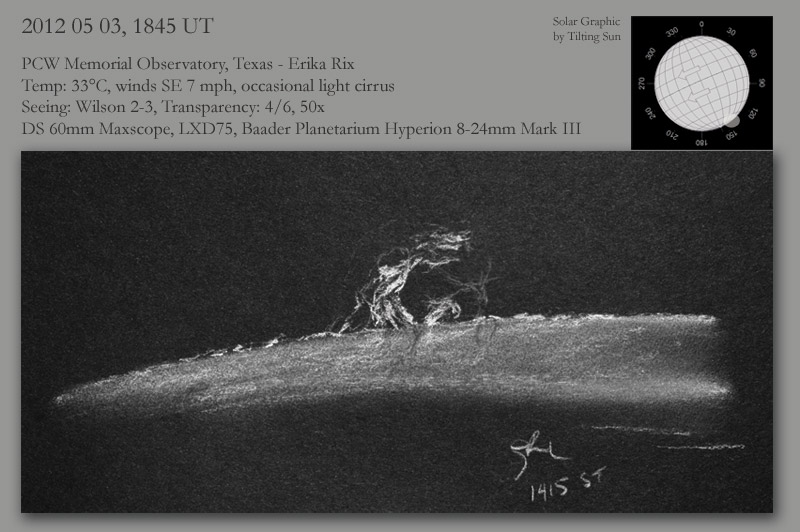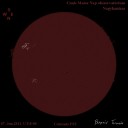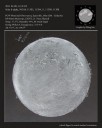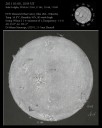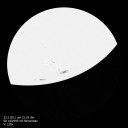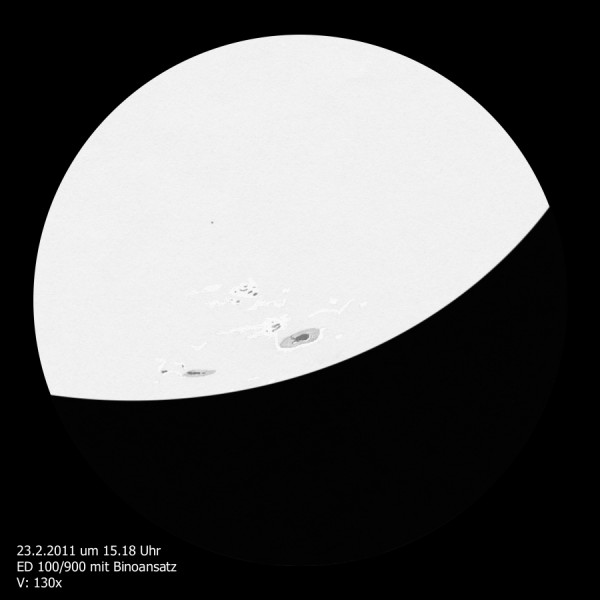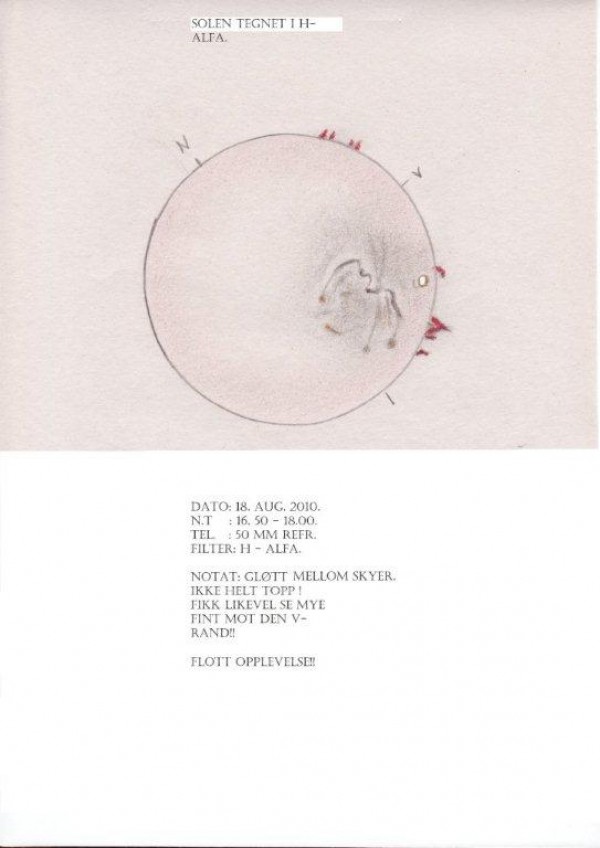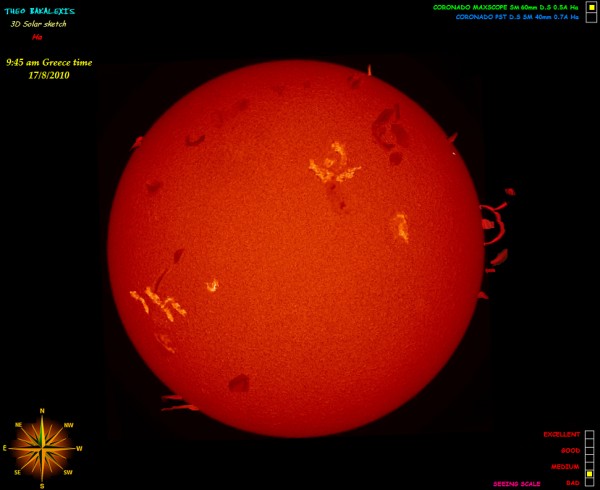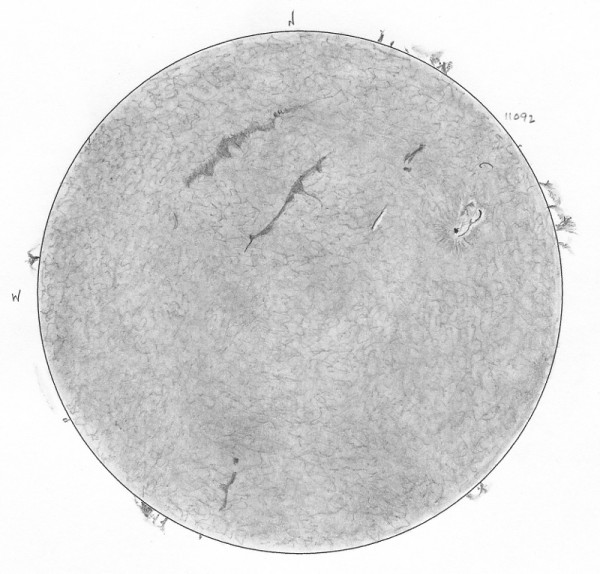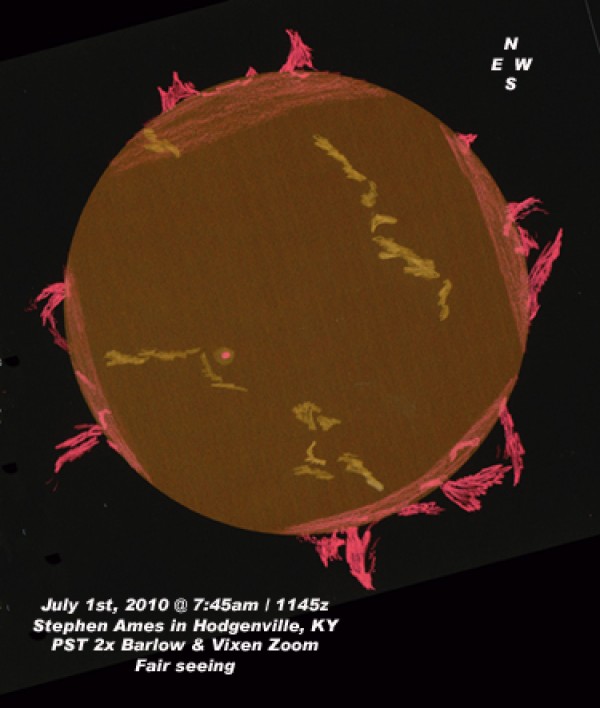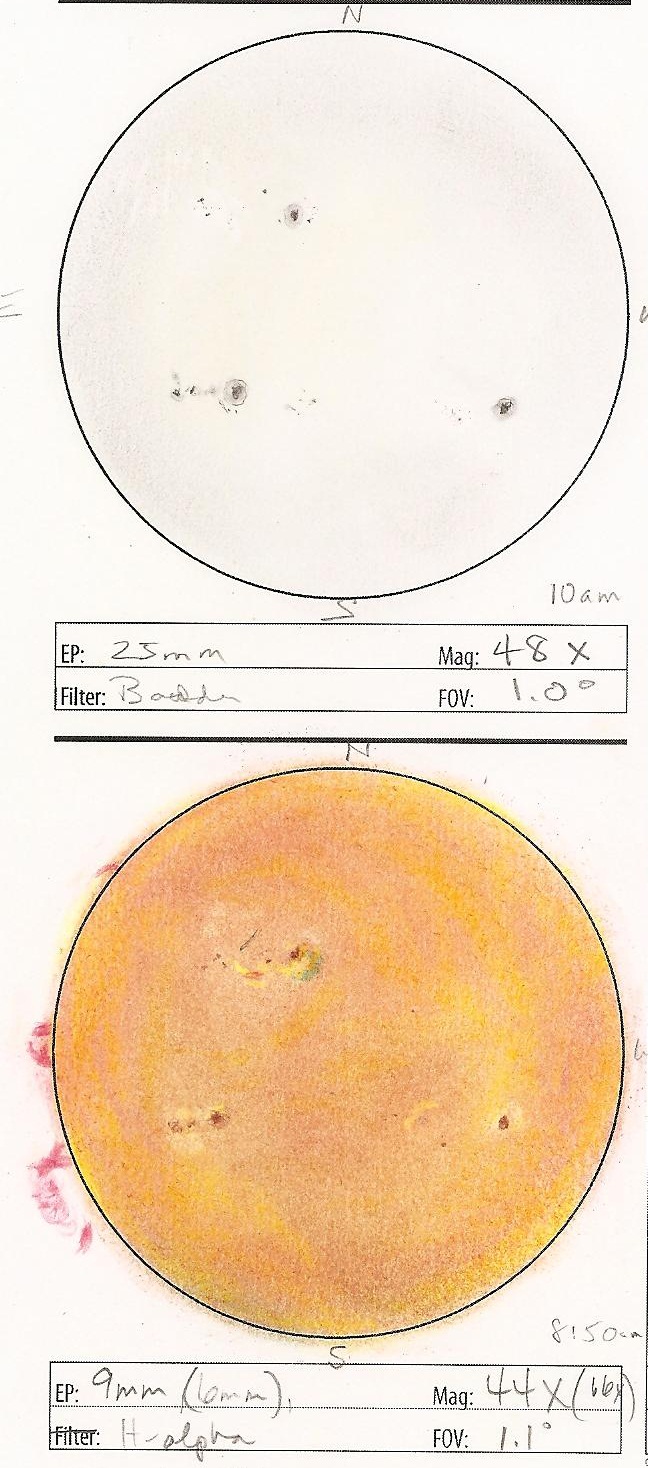
An exciting day under the Sun. Observing with both a Coronado PST h-alpha & white light 8” Dob fitted with a 3.5” solar filter. Sketches were made at the eyepiece(s).
Seeing was good to excellent. After sketching details of the 4 sunspot groups I could readily see with the PST, I noticed one of the plages (bright spots) on the 1513 sunspot brightening intensely. As it brightened the bottom portion (to the South) of the plage developed a greenish/blue hued widening irregularity. There was also a linear band that extended from the widening directly to the center of sunspot 1513. Above the sunspot there appeared a filament which I tried to capture as well in my sketch. Within 5 minutes the dark patch was gone. From some research and asking more experienced friends, I believe I witnessed a solar flare, probably a minor one but still very exciting. I have been observing with the PST for over a month now, but this was a first for me. The plages around all the major sunspots continued to brighten & fade during the observation period, but none to the intensity of 1513. The PST was loaned to me by a friend after my excitement over white light observing. It’s a wonderful instrument showing many features of the Sun not evident in white light solar filters.
Solar prominences on the limb were also detailed today with the larger one appearing as somewhat of a vortex shape, while another more north prominence appeared as a broken loop. I had observed yesterday & did not see this broken loop then.
I moved to white light observing & could see much greater detail in all the sunspots, including many that did not show up well with the PST.
White light filters are primarily for observing details of the photosphere (like sunspots, facule & granulation), where h-alpha narrow bandwidth shows detail in the chromosphere. The chromosphere or “sphere of color” is the second of the three main layers in the Suns atmosphere and is roughly 2,000 kilometers deep. It sits just above the photosphere, and below the corona.
I am in love with the ever changing face of the sun. I am sometimes tired at night by the time the sky clears but the morning is always mine!
Coronado PST 40mm
9mm Plossl 44X
8” Dob w/ masked 3.5” Astro Baader Solar filter (homemade)
25mm Plossl 48X
4,000 ft elevation
Maui, Hawaii
Aloha!
(Cyn) Thia Krach

